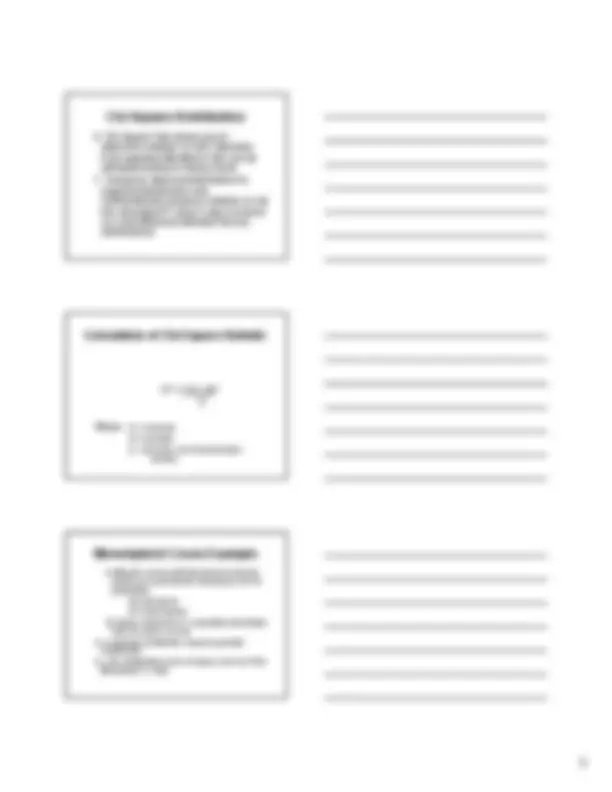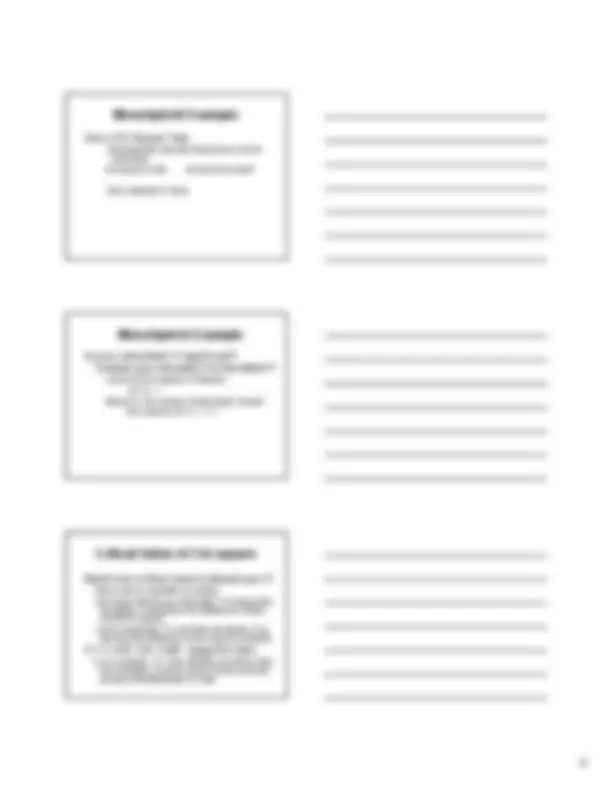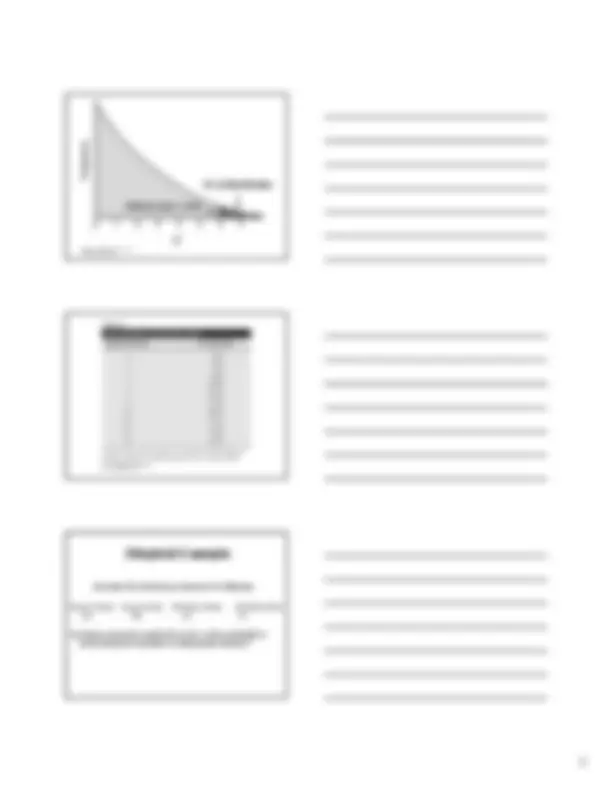





Study with the several resources on Docsity

Earn points by helping other students or get them with a premium plan


Prepare for your exams
Study with the several resources on Docsity

Earn points to download
Earn points by helping other students or get them with a premium plan
Community
Ask the community for help and clear up your study doubts
Discover the best universities in your country according to Docsity users
Free resources
Download our free guides on studying techniques, anxiety management strategies, and thesis advice from Docsity tutors
Material Type: Exam; Class: GENETICS; Subject: Biological Sciences; University: Idaho State University; Term: Spring 2006;
Typology: Exams
1 / 5

This page cannot be seen from the preview
Don't miss anything!




PROBABILITY AND GENETIC EVENTS
P = # of defined outcomes / total # of possible outcomes
1 chance (of a 3) / 6 possible outcomes = 1/
-probability of 2 independent events occurring together is equal to the product of their individual probabilities
-probability of either of 2 independent events occurring is equal to the sum of their individual probabilities -either or, but not both occur
probability that either both children will be albino or both will be normal?
-chance deviations are more likely when sample size is small
-segregation of alleles is affected by chance -independent assortment is affected by chance -fertilization is affected by chance
-first calculate expected frequencies of each phenotype 3/4 should be tall 1/4 should be dwarf
-then calculate X 2 value
-need to know degrees of freedom df = N - 1 Where N = the number of phenotypic classes Our example, df = 2 - 1 = 1
5% is used by scientific convention -this means that if your calculated X^2 is larger than the tabled X^2 at 5% then the difference is REAL, not due to chance -if your calculated X 2 is less than the tabled X^2 at 5%, then the difference is due solely to CHANCE
In our example, X 2 = 0.60, definitely less than 3.841, thus deviation is due to chance, these observed numbers fit a Mendelian 3:1 ratio
Consider the following observed F2 offspring:
Round, Yellow Round, Green Wrinkled, Yellow Wrinkled, Green 315 108 101 32
Do these observed results fit a 9:3:3:1 ratio predicted if these traits are inherited in a Mendelian fashion?